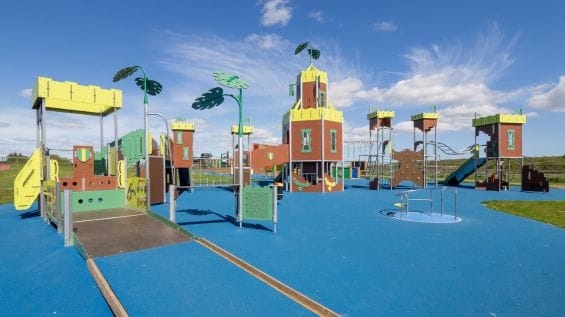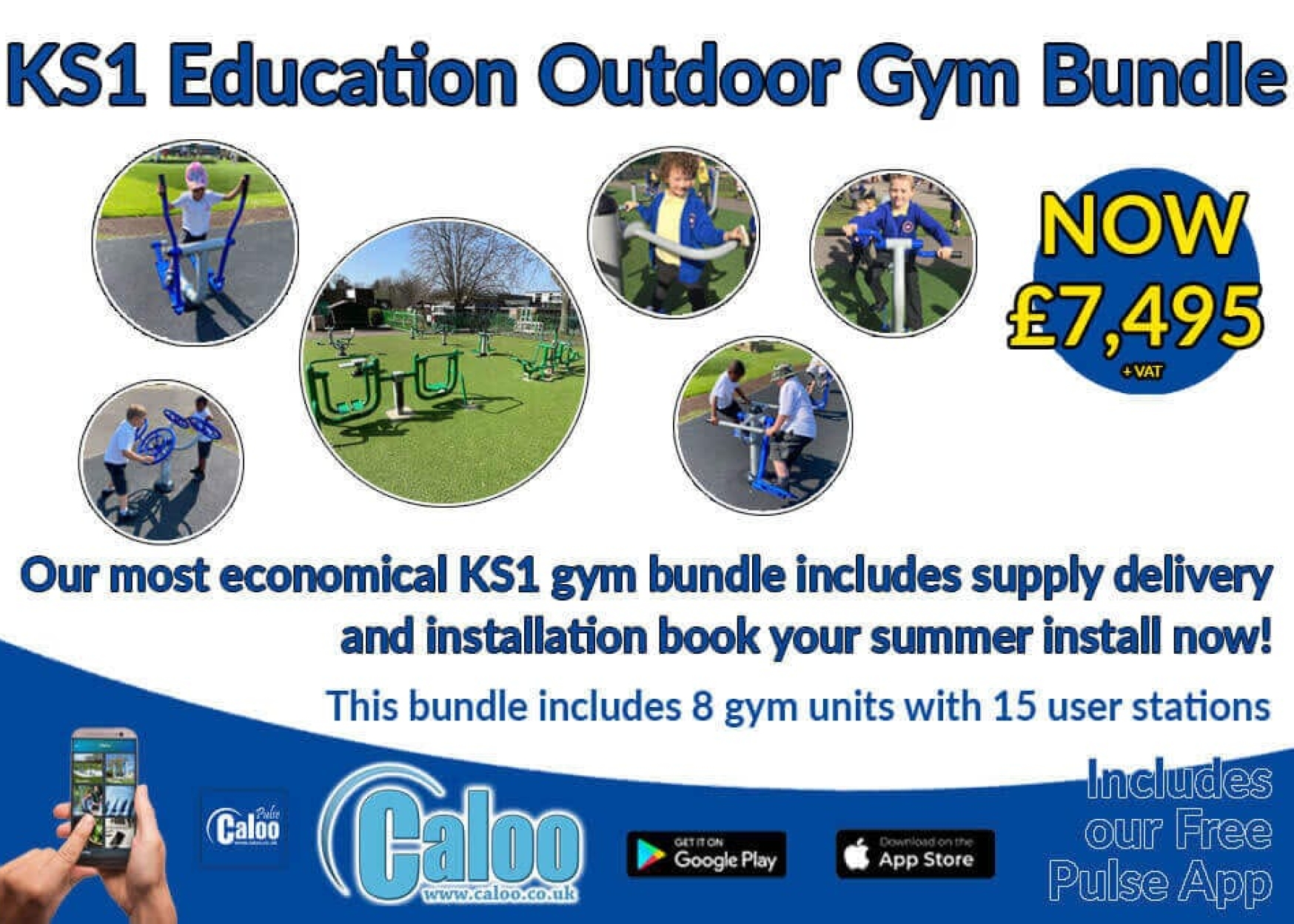
Jun

Why Inclusive Playgrounds Matter and How to Build One
Play is a universal language — one that should be accessible to every child, regardless of ability, background, or circumstance. Inclusive Playgrounds are designed with this belief at their core, ensuring that children of all abilities can play, learn, and grow side-by-side in a safe, welcoming environment.
Inclusive playgrounds ensure children of all abilities can play, learn, and grow together. They support physical, sensory, and social development while promoting equality and community inclusion. Learn why inclusive playgrounds matter and how to design one that’s accessible, safe, and engaging for every child.
As a leading UK supplier and installer of outdoor play and fitness equipment, Caloo is proud to support communities, schools, councils, and developers in creating inclusive play spaces that celebrate diversity and promote equal access. In this guide, we’ll explore why inclusive playgrounds matter and offer practical steps on how to build one that truly makes a difference.
Why Do Inclusive Playgrounds Matter?
1. Equal Access to Play
All children deserve the right to play — it’s a key part of physical, emotional, and social development. For children with disabilities or additional needs, access to well-designed outdoor spaces can often be limited or non-existent. Inclusive playgrounds remove these barriers, offering children with physical, sensory, and cognitive challenges the same opportunities for exploration, imagination, and fun as their peers.
2. Supports Development Across the Spectrum
Inclusive playgrounds aren’t just about physical access — they also provide the tools and spaces that stimulate different types of development. From motor skills and balance to communication and confidence, these playgrounds support holistic growth in children with autism, sensory processing disorders, mobility impairments, and more.
3. Builds Empathy and Social Bonds
When children of all abilities play together, it fosters empathy, understanding, and friendship. Inclusive playgrounds help break down stigmas, teach children about diversity, and encourage inclusive behaviours from an early age — vital traits for building a more compassionate society.
4. Meets Legal and Social Expectations
From the Equality Act 2010 to local authority planning requirements, there is growing recognition of the need for inclusive spaces. Schools, councils, and developers are increasingly expected to cater to all users. Investing in accessible playgrounds not only meets these expectations but demonstrates social responsibility and commitment to the community.
What Makes a Playground Inclusive?
Inclusive design is about more than simply adding a wheelchair ramp — it’s a holistic approach that considers every element of the playground experience. Here are some key features:
1. Accessible Surfacing
Playground surfacing should enable smooth, safe access for wheelchairs, pushchairs, and users with limited mobility. Wetpour, bonded rubber mulch, are excellent options that adhere to safety standards and enhance accessibility.
2. Diverse Play Equipment
A truly inclusive playground offers a range of equipment to suit different ages, abilities, and sensory needs:
• Wheelchair-accessible roundabouts
• Swings with secure harnesses or support seats
• Low-level climbing structures
• Musical play panels and sensory walls
• Tactile pathways and balance beams
This variety ensures all children can take part in play that challenges and excites them — regardless of ability.
3. Zoned Play Areas
Not every child enjoys loud, high-energy spaces. Creating distinct zones — such as quiet sensory areas, active zones, and calm seating — helps children self-regulate and find spaces that suit their mood and sensory preferences.
4. Inclusive Signage and Wayfinding
Clear visual signs, symbols, and colour-coded areas help children and carers navigate the space, particularly those with learning disabilities or visual impairments.
5. Seating and Shade
Accessible seating for carers and shaded rest areas ensure the playground is comfortable and usable for longer periods, supporting carers and providing essential respite zones for children.
How to Build an Inclusive Playground: Step-by-Step Guide
At Caloo, we believe the process of building an inclusive play space should be as accessible and supportive as the final result. Here’s how to start:
1. Begin with Consultation
Speak to the people who matter most — the children, carers, and professionals who will use or support the playground. This could include:
• SENCOs (Special Educational Needs Coordinators)
• Local disability advocacy groups
• Parents and carers
• Occupational therapists
• Teachers and teaching assistants
Understanding their needs, frustrations, and aspirations is the first step to delivering a genuinely inclusive outcome.
2. Assess the Site and Surfacing Options
A site visit is essential to understand the topography, access routes, space constraints, and existing features. From there, you can choose a surfacing option that balances safety, accessibility, and visual appeal. At Caloo, we offer a wide range of inclusive surfacing including:
• Wetpour surfacing for wheelchair ease and fall safety
• Bonded rubber mulch for natural aesthetics and durability
• Artificial grass for soft, all-weather coverage
3. Design with Purpose
Using the information gathered, create a design that:
• Offers equipment for varied physical abilities
• Incorporates stimulating sensory features
• Has routes that support independent movement
• Includes rest areas, shade, and seating
• Provides fun, challenge, and choice for all children
We recommend a mix of solo and group activities so children can play at their own pace and comfort level.
4. Choose Trusted Equipment Suppliers
Your equipment needs to be safe, robust, and proven to support inclusive play. Caloo offers a wide range of:
• Fully accessible roundabouts
• Supportive swings and gliders
• Sensory panels and music walls
• Inclusive multi-play units with transfer platforms
All designed and tested to BS EN 1176 safety standards.
5. Plan for Long-Term Use
An inclusive playground isn’t just about the launch — it’s about ongoing maintenance, inspections, and support. Caloo provides full aftercare services including:
• Annual or termly inspections
• Maintenance and spare parts
• Surfacing checks and repairs
This ensures the play area remains safe and enjoyable for all users long after installation.
Case Study: Delivering Inclusive Play in the Community
Let’s take an example from a recent Caloo project. In partnership with a local borough council, we installed a fully inclusive play area for a public park serving families from across the community.
The final design included:
• Wheelchair-accessible roundabout with transfer space
• Sensory pathway with musical and tactile panels
• A nest swing and inclusive seesaw
• Wetpour surfacing with ramped access
• Quiet seating zones with shade canopies
The project received overwhelmingly positive feedback, particularly from families of children with additional needs, who described the playground as “a space where their child can finally play without barriers.”
Overcoming Common Challenges
Even with the best intentions, some projects face obstacles. Here’s how to solve them:
Challenge: Limited Budget
Solution: Start with essential surfacing and a few versatile pieces of inclusive equipment. Design in phases and expand over time.
Challenge: Small Space
Solution: Use vertical design and multi-play units that offer different activities in one footprint. Caloo can recommend solutions ideal for compact sites.
Challenge: Lack of Awareness
Solution: Work with experienced partners like Caloo, who can guide you through the design process and recommend products proven to support inclusion.
Why Choose Caloo for Your Inclusive Playground Project?
With over 15 years’ experience working with schools, councils, developers, and community groups across the UK, Caloo is a trusted partner in delivering inclusive outdoor environments.
We offer:
• Full design-to-installation services
• A wide range of inclusive playground equipment
• Nationwide coverage and expert advice
• Bespoke designs tailored to your community’s needs
• Ongoing aftercare, inspections, and maintenance
Whether you’re upgrading a school play area, creating a community space, or designing for a new housing development, our team is here to help you create a space where every child can thrive.
Creating a Playground Where Every Child Belongs
Inclusive playgrounds aren’t just a ‘nice to have’ — they’re a necessity. They represent fairness, joy, growth, and unity. By investing in accessible, diverse, and engaging play environments, you’re not only enriching the lives of children with disabilities — you’re strengthening your whole community.
Ready to build an inclusive playground? Contact our team today for expert advice and to book a site visit. We would love to hear about your planned inclusive playground project!

















